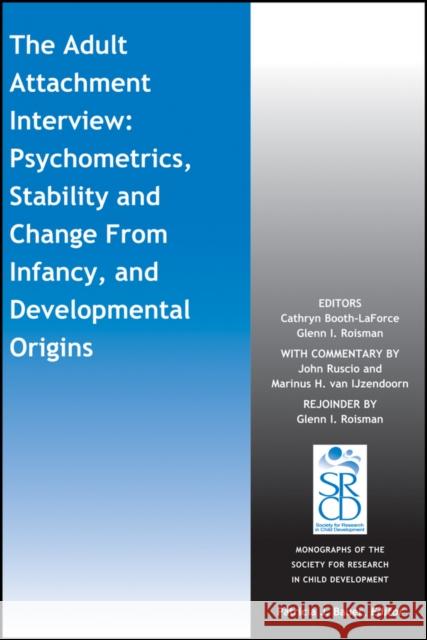The Adult Attachment Interview: Psychometrics, Stability and Change from Infancy, and Developmental Origins » książka
The Adult Attachment Interview: Psychometrics, Stability and Change from Infancy, and Developmental Origins
ISBN-13: 9781119017868 / Angielski / Miękka / 2014 / 316 str.
The Adult Attachment Interview: Psychometrics, Stability and Change from Infancy, and Developmental Origins
ISBN-13: 9781119017868 / Angielski / Miękka / 2014 / 316 str.
(netto: 183,14 VAT: 5%)
Najniższa cena z 30 dni: 185,33 zł
ok. 22 dni roboczych.
Darmowa dostawa!
Bowlby's (1969/1982) attachment theory has inspired decades of empirical work focusing on antecedents and consequences of variation in attachment security across the lifespan. However, significant questions remain about individual differences in adult attachment and their developmental origins. This book address these issues, reporting analyses based on Adult Attachment Interviews (AAIs; Main, Kaplan, & Cassidy, 1985) collected at age 18 years from the largest longitudinal sample of its kind (N = 857)--participants who had been enrolled in the NICHD Study of Early Child Care and Youth Development from birth through to 15 years. Part 1 provides confirmatory evidence that relatively independent AAI dismissing and preoccupied states of mind--along with variation in inferred maternal and paternal experience--capture the full range of participants' AAI discourse. Taxometric analyses demonstrated that individual differences are more accurately represented dimensionally than categorically. Part 2 reports evidence of weak but statistically significant stability in attachment from infancy through late adolescence, and lawful sources of continuity and change over time--maternal sensitivity, father absence, paternal depression, and negative life events. A specific focus on individuals who described below-average childhood experiences in the AAI but did so in a coherent manner (i.e., -earned-secures-) replicated evidence that they actually received average or better parental care, but also experienced significant family stressors in childhood. Additional analyses suggested theory-consistent developmental antecedents of the four AAI dimensions (i.e., dismissing, preoccupied, inferred maternal and paternal experiences). Together, these results represent a significant step forward in our understanding of adult attachment and its origins.











